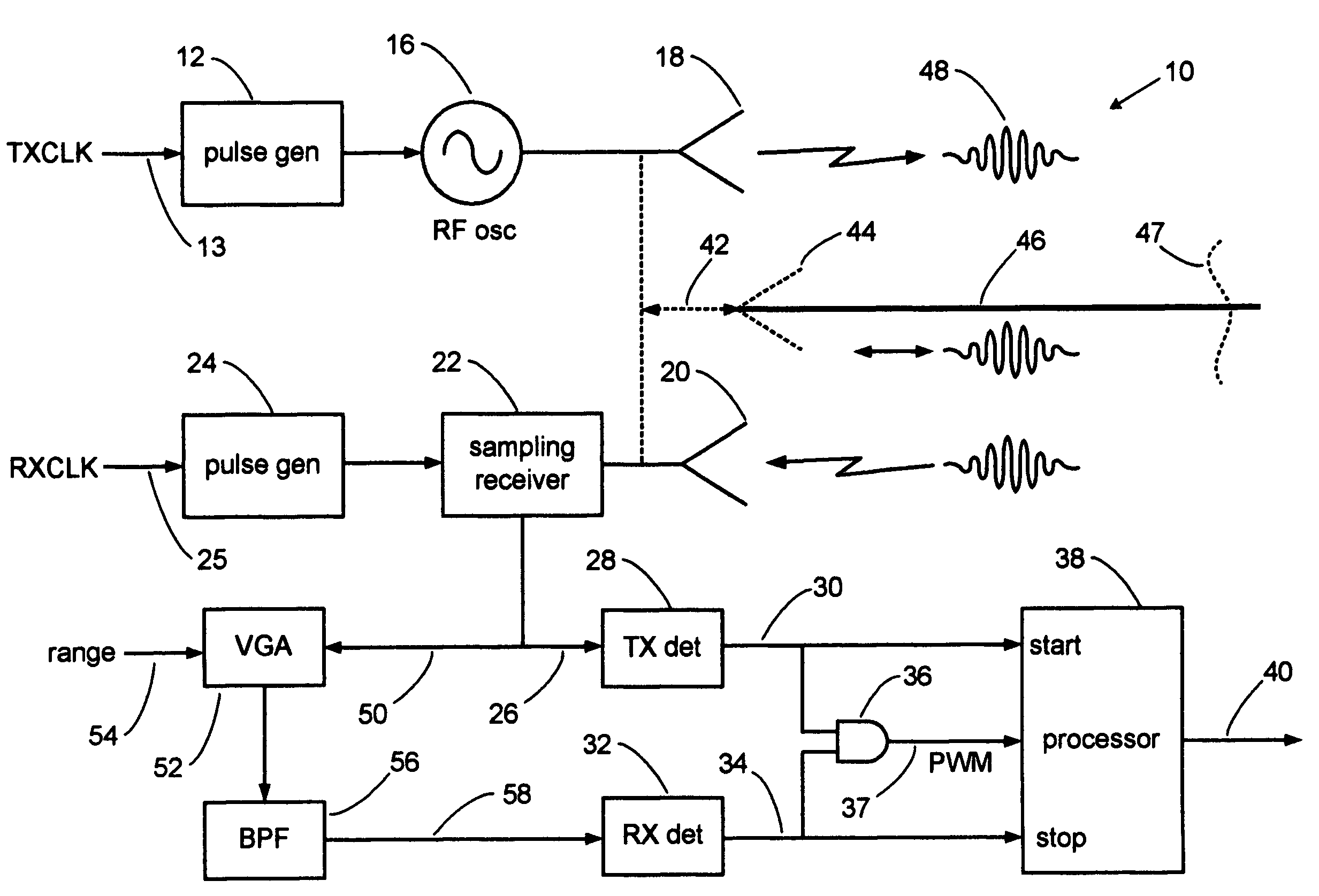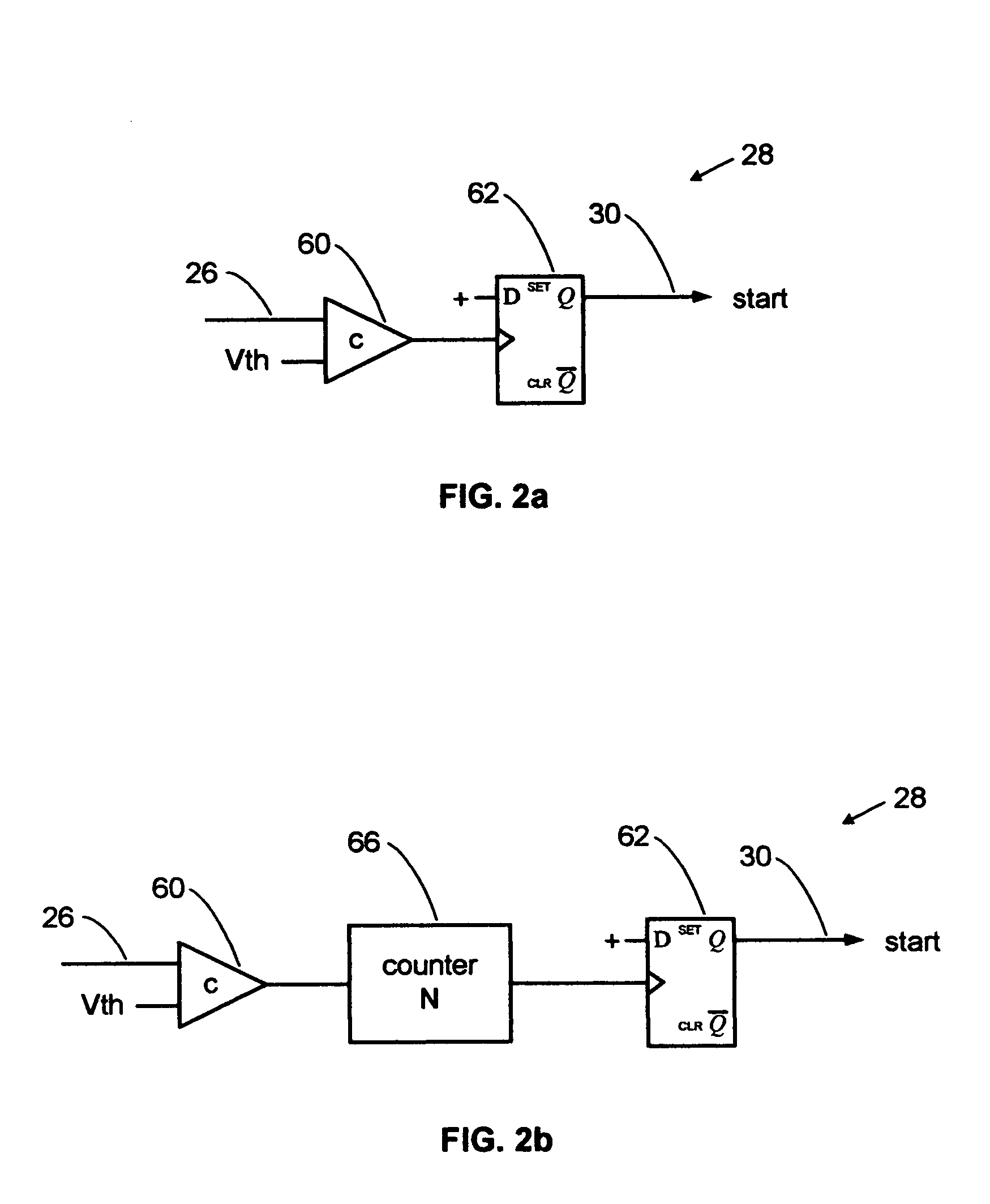Carrier phase detection system for radar sensors
a carrier phase detection and radar sensor technology, applied in the direction of distance measurement, amplitude demodulation, pulse technique, etc., can solve the problems of detectors having difficulty detecting a particular sinewave cycle, detecting pulsed rf, and approaching unattractive, so as to achieve high dynamic range, high accuracy, and high accuracy
- Summary
- Abstract
- Description
- Claims
- Application Information
AI Technical Summary
Benefits of technology
Problems solved by technology
Method used
Image
Examples
Embodiment Construction
[0025]A detailed description of the present invention is provided below with reference to the figures. While illustrative component values and circuit parameters are given, other embodiments can be constructed with other component values and circuit parameters. All U.S. patents and copending U.S. applications cited herein are herein incorporated by reference.
General Description
[0026]The present invention overcomes the limitations of the various prior detection techniques by detecting the time-of-peak (TOP) of the expanded time RF burst envelope within an analysis window of time and then using that detection event to gate a carrier phase detector. The carrier phase detector detects the zero axis crossings of each sinewave cycle within a burst. The zero axis crossing of a selected cycle is gated by the TOP detection. Therefore, the accuracy of the detection is directly tied to the selected sinewave zero axis crossing, which is highly accuracy, and not to the TOP accuracy. Furthermore,...
PUM
 Login to View More
Login to View More Abstract
Description
Claims
Application Information
 Login to View More
Login to View More - R&D
- Intellectual Property
- Life Sciences
- Materials
- Tech Scout
- Unparalleled Data Quality
- Higher Quality Content
- 60% Fewer Hallucinations
Browse by: Latest US Patents, China's latest patents, Technical Efficacy Thesaurus, Application Domain, Technology Topic, Popular Technical Reports.
© 2025 PatSnap. All rights reserved.Legal|Privacy policy|Modern Slavery Act Transparency Statement|Sitemap|About US| Contact US: help@patsnap.com



